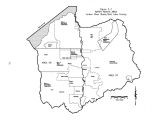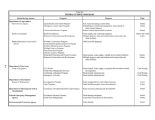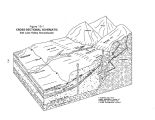| OCR Text |
Show The 1996 amendments to the Safe Drinking Water Act created several new programs and included a total authorization of more than $ 12 billion in federal funds for various drinking water programs and activities nationwide from 1997 through 2003. The amendment provided $ 12.5 million to the Division of Drinking Water in a revolving fund program. New capacity development provisions are added to the SDWA. The EPA must complete a review of existing state capacity development efforts and publish information to assist the states and public water suppliers with these efforts. By August 6, 1998, the EPA must publish regulations requiring community water systems to prepare and distribute consumer confidence reports at least once a year. The governor of a state may decide not to apply the direct mailing requirement for consumer confidence reports to a community water system serving fewer than 10,000 people. The EPA must publish a maximum contaminant level goal ( MCLG) and promulgate a National Primary Drinking Water Regulation ( NPDWR) for contaminants that: 1) may have an adverse effect on human health, 2) are known or are likely to occur in public water systems at a frequency and concentration of significance to public health, and 3) whose regulation offers a meaningful opportunity to reduce health risk for people served by public water systems. The EPA must issue regulations establishing criteria for a monitoring program for unregulated contaminants. The regulations are to ensure that only a representative sample of systems serving 10,000 or fewer people are required to monitor. By August 6, 1999, and every five years thereafter, the EPA must issue a list of no more than 30 unregulated contaminants to be monitored by public water systems and included in the occurrence database. A new program is established authorizing the EPA to provide grants to states for the development and implementation of a state program to ensure the coordinated and comprehensive protection of groundwater resources within the state. 11.4 Culinary Water Use and Projected Demand At the present time, approximately 255,700 acre- feet of high quality water is supplied annually by the major public water purveyors for various residential, commercial and industrial uses. By the year 2020, an estimated 419,300 acre- feet of water will be needed to meet the demands of population growth and increased commercial and industrial development. Many small, unapproved water systems are located in the county, but they serve a very limited clientele. Virtually all of the delivered culinary water is treated at approved water treatment facilities. Table 11- 2 lists the drinking water facilities and the plant capacity. Table 11- 3 lists the major retail water providers along with the existing water use ( 1995) and the projected water demand ( 2020). These projections are based upon the existing water use pattern, anticipated population ( See Table 4- 1), and the Wasatch Front Water Demand/ Supply Model. In 1977, the state of Utah began a cooperative effort with the U. S. Geological Survey to quantify Jordan Aqueduct Terminal Reservoir under construction in West Valley water use for public water suppliers and major self- supplied industries. The data are collected by the Division of Water Rights through questionnaires mailed each year to public water suppliers. The data for 1979 through 1993 are summarized in published reports. The 1994- 95 data have not yet been published. 11- 6 |

















































































































































































